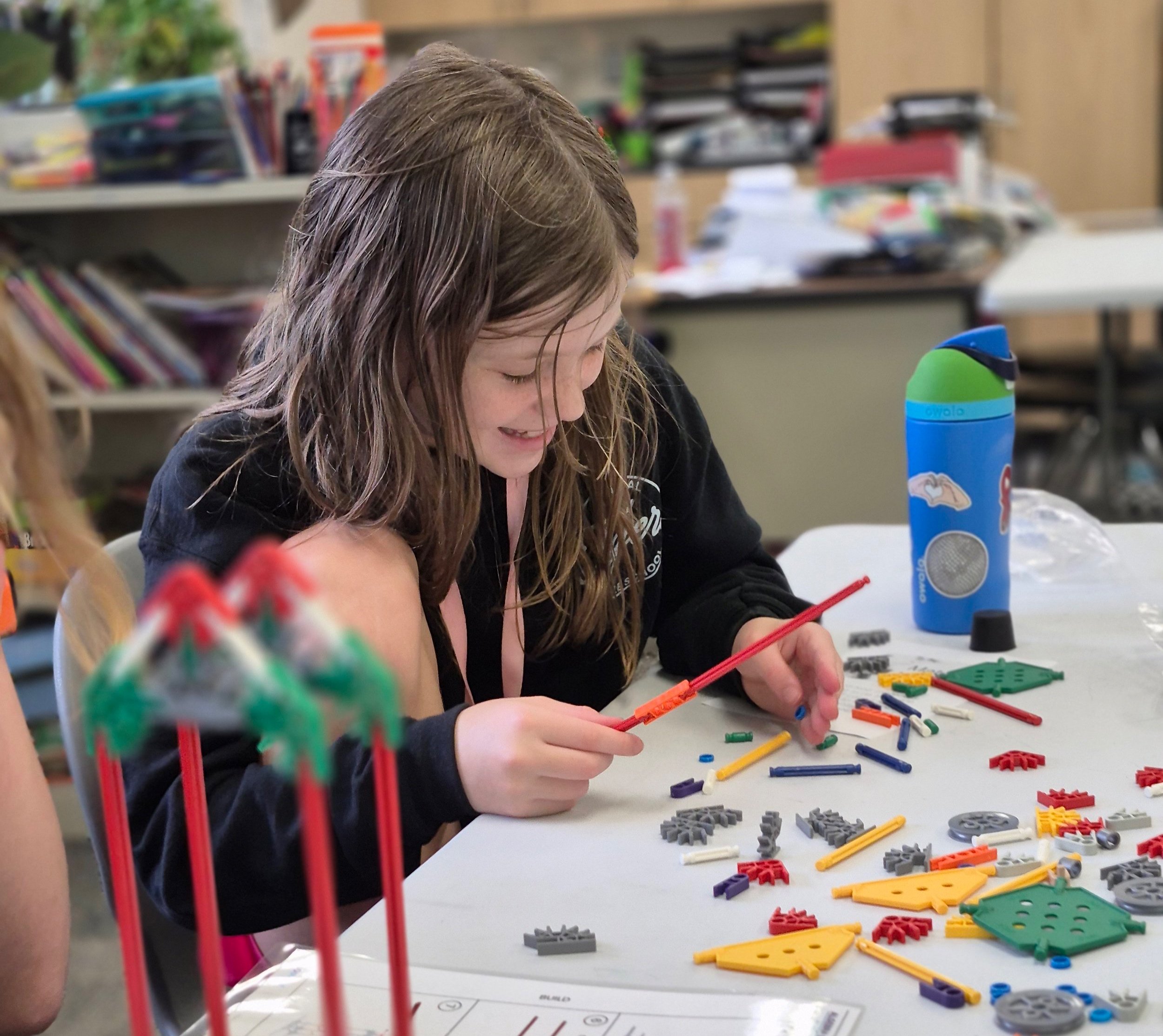Human-Centered Learning in an Age of AI
Hands-on, social math experiences are more urgent than ever
PART 1: IT’S TIME FOR MATH LAB
PART 2: STRESSED-OUT KIDS CAN’T LEARN
PART 3: MATH IS A HUMAN SKILL
PART 4: TEACHERS ARE NOT THE PROBLEM
PART 5: WHAT TO DO IN MATH LAB

It's Time for Math Lab
Textbooks and computer practice aren’t enough. Kids deserve more
Every school district in America is working hard to improve math outcomes. Curricula have been adopted and replaced. Technology tools—from personalized practice programs to AI tutors—have been layered in. Teachers have been trained in new instructional models, new frameworks, and new pacing guides. But the same stubborn facts remain: math scores are flat, engagement is low, and too many students feel they are simply not “math people.”
Why? Because despite all these changes, the actual structure of math instruction has remained the same. Math class still consists of two main components: instructional time, when teachers deliver lessons aligned to a curriculum, and practice time,
when students work through exercises, on screens or worksheet.What’s missing is a 3rd dimension of school math—collaborative, hands-on problem solving that lets students actually use the math they’ve been learning.
Call it Math Lab. Students build with physical materials, measure and model, investigate and explore, discuss and disagree … and connect the abstract language of math to their actual experience.
It’s not free play. It’s a structured element of the math week, available to every student. A time when math becomes active, social, and real.

This feels like a new idea, but it’s not. In science, everyone agrees that worksheets aren’t enough: learning just isn’t complete without a lab. It’s time for math to catch up!
In an effective Math Lab, students:
- Design, create and invent
- Use their hands
- Get away from their desks and move around
- Collaborate and communicate
- Engage with ambiguity
- Feel ownership, pride, and joy
Why does this matter? Because too many students, even those who can follow procedures and earn passing grades, never feel a deep connection to mathematics. They don’t experience the satisfaction of solving something messy, the thrill of discovering a pattern, or the confidence that comes from contributing an idea to a group. Instead, they associate math with stress, right answers, and isolation.
This is not the fault of teachers. Teachers are doing their best with the time and tools they’ve been given. But the structure of the school day, and the prevailing model of math instruction, leaves little room for the kind of learning that students remember, enjoy, and carry with them.
We see what happens when students are given the chance to engage deeply. In districts that have introduced Math Lab-style instruction, we hear the same things over and over again from teachers: “My quietest students are leading their groups.” “I didn’t realize how much they understood until I saw them explain their thinking.” “The room was buzzing with math.”

These moments happen not because we change what is taught, but because we change how students experience it. Math Lab provides a different context for learning—one that invites movement, conversation, creativity, and collaboration. In short, it brings math to life.
And this isn’t just about engagement. There’s a growing body of research in the learning sciences showing that physical interaction with math concepts supports conceptual understanding. When students use their bodies and hands to model math—whether they’re building, walking number lines, using manipulatives, or sketching and measuring—they activate different neural pathways. This process, known as embodied cognition, helps students internalize mathematical ideas in ways that are deeper and more durable than traditional instruction alone.
Add to this the social dimension. Learning in groups isn’t just a way to make math more fun—it’s how students develop language, reasoning, and confidence. When students talk about math, they clarify their thinking, encounter different perspectives, and learn to construct and critique arguments. These are universal goals found in every instructional practice framework, from NCTM to TEKS to Common Core. Yet in many classrooms, opportunities for this kind of mathematical conversation are rare.

Math Lab makes time for it. By carving out a separate block for applied, collaborative work, schools can ensure that all students—not just those in advanced tracks or extracurricular clubs—have access to rich mathematical experiences.
Students still need fluency and foundational knowledge, of course. But more than that, they need to become thinkers. They need to learn how to model a messy problem, test a strategy, change course, and explain their reasoning. These are skills that screen-based practice rarely supports. These are human skills.
Which brings us back to structure. Math Lab is not a product. It’s a structural change. One that says, we’re not going to hope applied math happens on a good day. We’re going to schedule it. Plan for it. Build capacity for it. Make it part of how we “do math.”
This structural shift also opens new opportunities for teachers. They get to step out of the role of content deliverer and become a facilitator, observer, and coach. They get to see students in action, intervene meaningfully, and use what they learn to inform their core instruction. It can be some of the most joyful teaching they do all week. For school and district leaders, this means investing not just in new materials, but in a new mindset. One that honors the fact that math isn’t just something we teach about. It’s something we teach students to do. We make time for science labs, for writing workshops, for music rehearsal and art studio. Let’s make time for Math Lab. Because if we want students to build real mathematical understanding—-and the confidence that comes with it—-we have to give them more than lectures and screens. We have to give them the space to think, explore, create, and connect.
